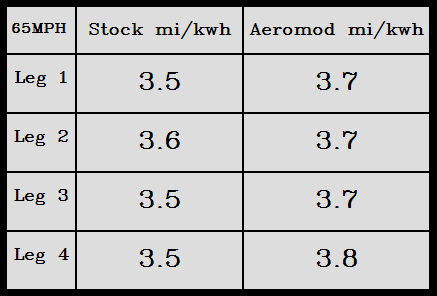GetOffYourGas said:When the vehicle is coasting, it has some kinetic energy that has already been put into the system via the motor. It will slowly lose that energy to rolling resistance and to aero drag..
The goal is to measure the energy consumption while just moving at various speeds, and not the initial
energy to obtain each speed. That more effectively determines the energy efficiency of the aerodynamic mods.
GetOffYourGas said:The rolling resistance is constant (independent of speed) and the drag is related to speed by a well known equation.
The energy consumed by a vehicle's rolling resistance is:
Energy = K m V, where K is a constant & wheels related, m is the weight of the vehicle, V is the velocity of the vehicle
The energy consumed by a vehicle's drag resistance as it moves thru the air is:
Energy = K A V^2, where K is the coefficient of drag, A is the frontal area of the vehicle, V is the velocity (it's squared)
of the vehicle.
As can be noted from above, the vehicle's speed does affect both the rolling resistance energy loss and the drag
energy loss.

